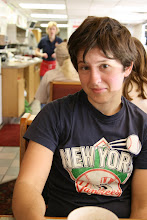 Here's the text for a recent award submission I handed in today:
Here's the text for a recent award submission I handed in today:Since arriving at CCA to begin work towards my MFA I have initiated a series of projects which use drawing as a vehicle to tell personal stories and initiate conversations about family, home, memory, history, loneliness and mortality. I like how the choice of drawing a specific object or idea invites interrogation of what is missing, a question of how to render the truth in a subjective and objective world. This dichotomy reflects my understanding of identity-- that we are equally shaped by all the things we are as all the things that we are not. In this same way, stories are told with intentional omissions, choice implies the possibility of multiple truths, one of my drawings exists only in contrast to the shape of white paper around it, and existence is contingent upon the ability to be lost or absent. I’m interested in objects and histories that speak of the tension between simultaneous absence and presence, as evident in the wear and breakdown of belongings, the fading and reinterpretation of memory and the conflicting truths of contemporary and historical experience.
The works selected for this submission were executed in the past two months and represent continuing commitment and investigation of three ongoing series. To Have and To Hold reexamines objects by straying from the truth of their source to incorporate personal narrative, emotion and association. This fictionalization of objects invites speculation over the verisimilitude of representational drawing and the fallibility of memory. Similarly deviant in strategy, drawings in the series Instant Relatives use a collection of anonymous school portraits as source material, but estrange the photographic image from the physicality of the photograph. This dissection is achieved, in various ways, through manipulative rendering of the photographs to exclude the specificity and biography of the human face. Drawings in the series, Proof we were there, seek to address the false immortality of photography. In the four pieces chosen, photographs of formal portraits taken in the staged interiors of photography studios were rendered without their posed subjects.

No comments:
Post a Comment